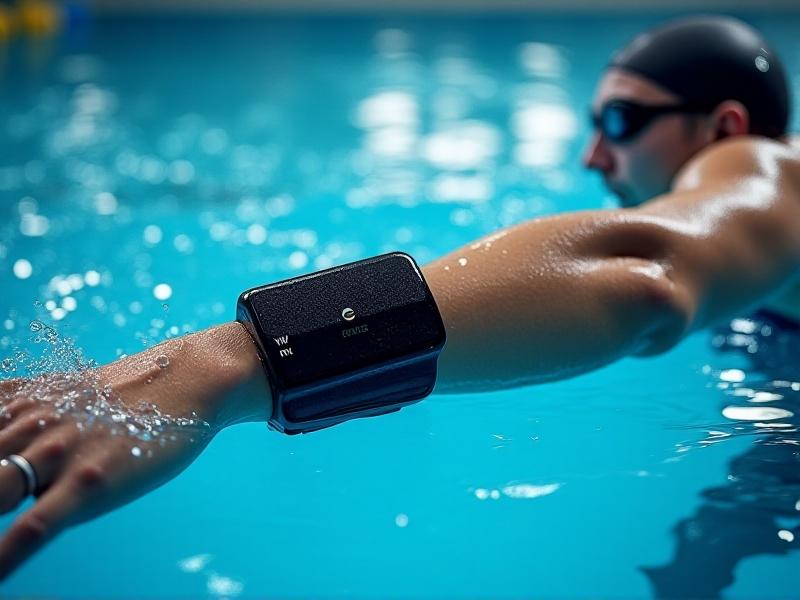Telehealth Aquatic Program Hybrid Models
The Rise of Telehealth and Aquatic Therapy: A New Frontier in Healthcare
In recent years, the healthcare industry has witnessed a significant transformation, driven by technological advancements and the need for more accessible care. Telehealth, once a niche service, has become a cornerstone of modern healthcare delivery. Simultaneously, aquatic therapy has gained recognition for its unique benefits in rehabilitation and pain management. The convergence of these two fields has given rise to innovative hybrid models, such as the Telehealth Aquatic Program. This approach combines the convenience of telehealth with the therapeutic advantages of aquatic therapy, offering a promising solution for patients and healthcare providers alike.

Understanding Telehealth Aquatic Programs: What Are They?
Telehealth Aquatic Programs represent a novel approach to delivering aquatic therapy remotely. These programs leverage telehealth platforms to connect patients with licensed aquatic therapists, enabling real-time guidance and support. Patients can perform exercises in their own pools or community aquatic centers while receiving professional supervision through video conferencing. This model not only expands access to aquatic therapy but also ensures continuity of care, particularly for individuals in remote or underserved areas. By integrating technology with traditional therapy methods, Telehealth Aquatic Programs bridge the gap between in-person and virtual care.

The Benefits of Hybrid Models in Aquatic Therapy
Hybrid models in aquatic therapy offer a range of benefits for both patients and providers. For patients, these programs provide flexibility, allowing them to receive therapy in a familiar environment without the need for frequent travel. The combination of telehealth and aquatic therapy also enhances patient engagement, as individuals can follow personalized exercise plans tailored to their specific needs. For healthcare providers, hybrid models reduce overhead costs and expand their reach to a broader patient population. Additionally, the use of telehealth platforms enables therapists to monitor progress more effectively and make real-time adjustments to treatment plans.

Overcoming Challenges in Telehealth Aquatic Programs
While Telehealth Aquatic Programs offer numerous advantages, they also present certain challenges that need to be addressed. One of the primary concerns is ensuring patient safety, as therapists cannot physically assist patients during exercises. To mitigate this risk, programs must include thorough safety protocols and clear instructions for patients. Another challenge is the need for reliable technology, including high-quality video conferencing tools and secure data transmission. Additionally, some patients may face barriers to participation, such as limited access to a pool or lack of technological literacy. Addressing these challenges requires collaboration between healthcare providers, technology companies, and community organizations.
Technology's Role in Enhancing Telehealth Aquatic Programs
Technology plays a pivotal role in the success of Telehealth Aquatic Programs. Advanced telehealth platforms enable seamless communication between therapists and patients, facilitating real-time feedback and support. Wearable devices, such as waterproof fitness trackers, can monitor vital signs and track progress during aquatic exercises. Virtual reality (VR) and augmented reality (AR) technologies are also being explored to create immersive therapy experiences. These innovations not only enhance the effectiveness of aquatic therapy but also make it more engaging and accessible for patients. As technology continues to evolve, the potential for Telehealth Aquatic Programs to revolutionize healthcare delivery will only grow.
Case Studies: Success Stories of Telehealth Aquatic Programs
Several case studies highlight the success of Telehealth Aquatic Programs in improving patient outcomes. For instance, a program implemented in a rural community enabled patients with chronic pain to access aquatic therapy without traveling long distances. Participants reported significant reductions in pain and improved mobility after completing the program. Another case study focused on pediatric patients with developmental disabilities, demonstrating how telehealth aquatic therapy enhanced their motor skills and confidence. These success stories underscore the potential of hybrid models to address diverse healthcare needs and improve quality of life for patients.
Future Directions: Expanding the Reach of Telehealth Aquatic Programs
The future of Telehealth Aquatic Programs looks promising, with opportunities for expansion and innovation. As telehealth adoption continues to grow, more healthcare providers are likely to incorporate aquatic therapy into their offerings. Partnerships with community centers, gyms, and schools can increase access to pools and facilities for patients. Additionally, research into the long-term benefits of hybrid models will provide valuable insights for optimizing these programs. By embracing technology and fostering collaboration, the healthcare industry can ensure that Telehealth Aquatic Programs remain a viable and effective option for patients worldwide.
Conclusion: The Transformative Potential of Telehealth Aquatic Programs
Telehealth Aquatic Programs represent a transformative approach to healthcare, combining the therapeutic benefits of aquatic therapy with the convenience of telehealth. These hybrid models address critical challenges in healthcare delivery, such as accessibility and patient engagement, while offering numerous benefits for both patients and providers. As technology continues to advance and more success stories emerge, the potential for Telehealth Aquatic Programs to revolutionize rehabilitation and pain management becomes increasingly evident. By embracing this innovative model, the healthcare industry can pave the way for a more inclusive and effective future.







